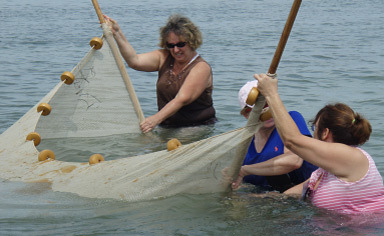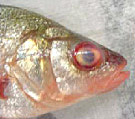COSEE Central Gulf of Mexico (COSEE CGOM), established in 2003, is a collaboration between the University of Southern Mississippi's
J.L. Scott Marine Education Center, Dauphin Island Sea Lab, the University of Florida's Natural Museum of History and Florida Sea Grant
College Program, and the Mississippi State University Computer Technology Center. In 2006 Dr. Johnson, then a postdoc in Marine
Microbiology at the University of Southern Mississippi's Gulf Coast Research Laboratory, discovered how COSEE CGOM could help her.
"COSEE was my liaison with local teachers," she says. "Otherwise I wouldn't have been able to interact with any high school students.
As a researcher I just didn't have time to go out and recruit. Through the COSEE program the students came to me; the contacts were
already there."
That year Crystal participated in COSEE CGOM's
Summer Online Institute, delivering a presentation on
Oceans and Human Health.
COSEE CGOM Principal Investigator Dr. Sharon Walker, then at the University of Southern Mississippi, was instrumental in getting Crystal
involved. "Every time she asked I said yes," says Crystal. "I got a lot of good feedback, and the relationship grew." As Crystal began
writing grant proposals she saw COSEE CGOM as having a wealth of knowledge to draw from. "Having COSEE there made it easier for me to
write outreach into my grants," she says. "It was a powerful wealth of knowledge to go to for my needs, making a mutually beneficial
relationship."
Calling her relationship with COSEE CGOM "a match made in heaven", Crystal went on to participate in the 2007 Two-Day Workshop. Crystal
and other scientists joined 39 educators in classroom, lab and field experiences. During the workshop the participants collected water
samples, grew vibrios and investigated the growth of colonies.
"A centralized program like COSEE means you can have a really big impact on local high school students." |
Crystal's experience with COSEE has helped her in her own teaching and continued outreach. She now asks herself how she can adapt her
research experiences to a classroom setting, such as doing DNA extractions from strawberries or watermelon, adding dye for
fluorescence – the "whole wow factor" – and helping landlocked schools develop an activity related to vibrios. "I like problem solving,
using creative ways to achieve the same result," says Crystal. "And when they can explain it back to me, then I know I've gotten the
concept across."



